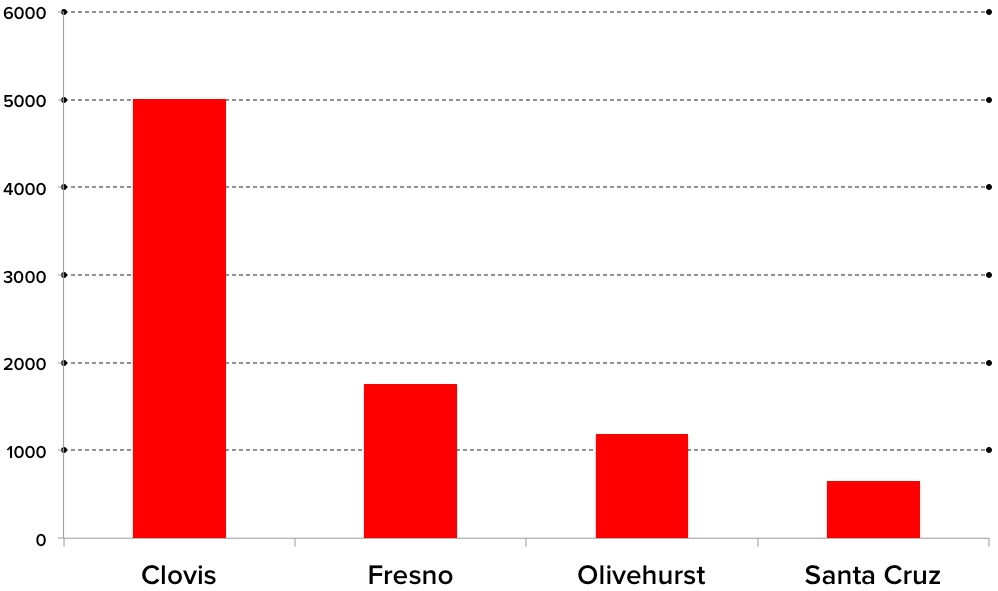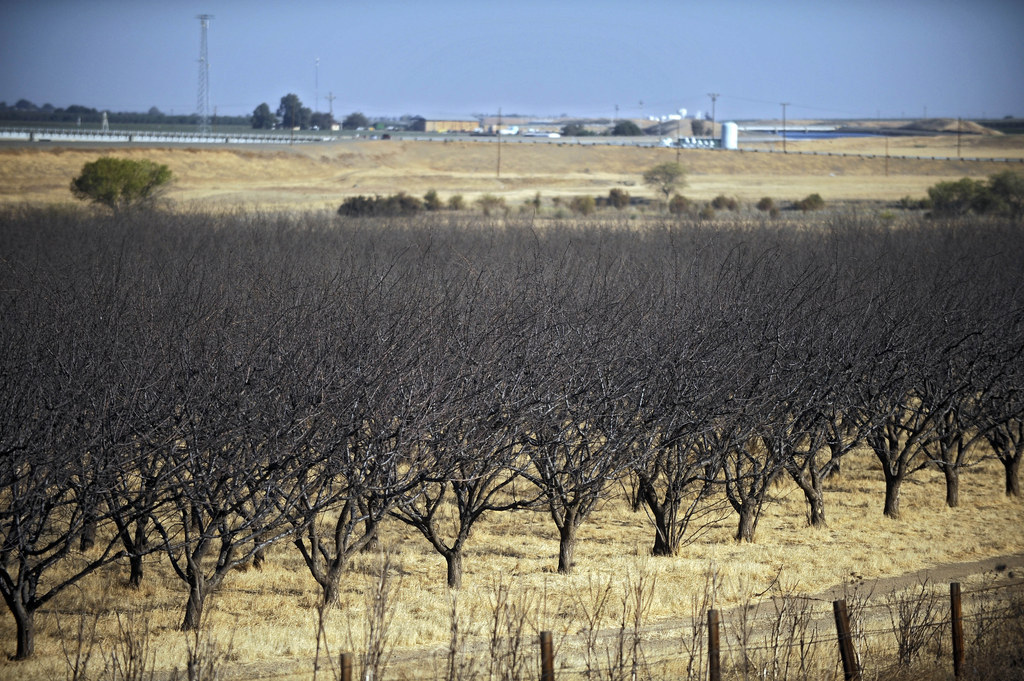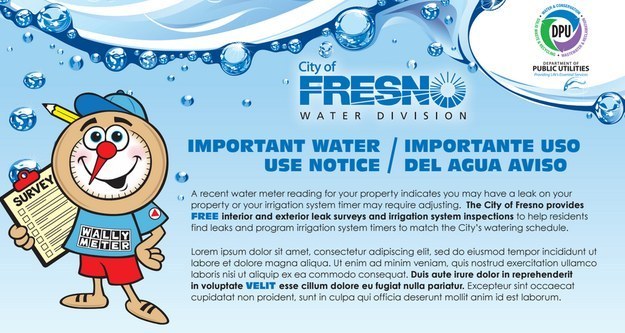
This June, drought-plagued California successfully cut way back on water use. But in a few cities something else was happening too: Hundreds of people were fined for using too much water.
On Thursday, the State Water Resources Control Board announced that California's cities had cut water use by 27.3% in June, as compared to the same period in 2013.
The numbers are being tracked as California enters its hottest, driest months during the fourth year of a crushing drought. Gov. Jerry Brown also has ordered California's cities to reduce their water use by 25%.
But while water use was falling in June, penalties shot up, with officials eventually handing out 9,582 fines. By comparison, in May only 1,928 fines were issued.
The vast majority of the fines were handed out in a single county located in California's Central Valley.

The City of Clovis issued a total of 5,008 fines, or nearly three times as many as any other community, according to data released by the State Water Resources Control Board. Clovis is home to about 100,000 people, and is located in Fresno County.
According to the Fresno Bee, these fines added up to $125,197. Most of the city's fines were issued to residential water users, who pay $25 for their first citation. (City officials provided the Bee with slightly lower numbers than reported by the state, saying they only issued 4,975 fines.)
Nearby, Fresno city issued a total of 1,761 fines in June, making it the second most active community for penalties in California. Fresno collected $79,245 from its fines, the Bee reported.

Together, these two cities accounted for more than 70% of California's June water use fines. The community of Olivehurst came in a comparatively close third, with 1,184, while Santa Cruz issued the fourth most, at 649.
Numerous other communities around the state also issued fines for using too much water. However, the data shows other communities handed out anywhere from one to a few dozen fines — not hundreds or thousands. Full data for some communities also wasn't immediately available; Montecito, for example, issued 671 fines in April, but numbers for May and June were not included in the state data.
Clovis and Fresno both had historically high per capita water use and were ordered to make big cuts earlier this year, but they also weren't the most extreme offenders.
After Brown ordered mandatory cutbacks, Clovis was ordered to reduce water consumption by 36%. At the time, the state listed the city's per person per day water use at 235.2 gallons, based on 2014 data.
Clovis nearly made its state-mandated goal, trimming water use by 33% in June, as compared to 2013.
Per capita water use in Fresno was listed at 146.4 gallons per day when the mandatory cuts were announced, and the city was ordered to reduce water use by 28%. It exceeded that target in June, cutting water use by 30%.
In other words, both cities significantly reduced the amount of water they use while collectively handing out thousands of fines.

But an entirely different story played out in other communities. In the Bella Vista Water District, which serves a community in Northern California, the state listed per capita water use at 386.3 gallons per day. The district was ordered to reduce use by 36% — the same as in Clovis.
In June, the Bella Vista Water District didn't hand out a single fine, but still managed to reduce water use by a whopping 52%.
On the other hand, Fallbrook, in San Diego County, was using 217.3 gallons of water per person per day and also was ordered to make a 36% reduction. Like Bella Vista, Fallbrook didn't hand out any fines in June, but it also didn't cut back much; state numbers show it only reduced use by 9% in June, making it among the worst-performing communities in the state.
And then of course there's Santa Cruz, which started out with very low per capita water consumption, issued hundreds of fines, and managed to cut back by 32% in June — far exceeding its target of only 8%.
Other communities — all of which issued fewer fines than Clovis and Fresno — run the gamut, from successfully reducing water use to making very few improvments at all.
It's difficult to draw a clear conclusion from these results – Do fines work? Are they the best solution? — and California is a state with incredibly diverse climates and built environments. What is clear, however, is that as the drought drags on California cities continue to function effectively as labs experimenting with solutions.
